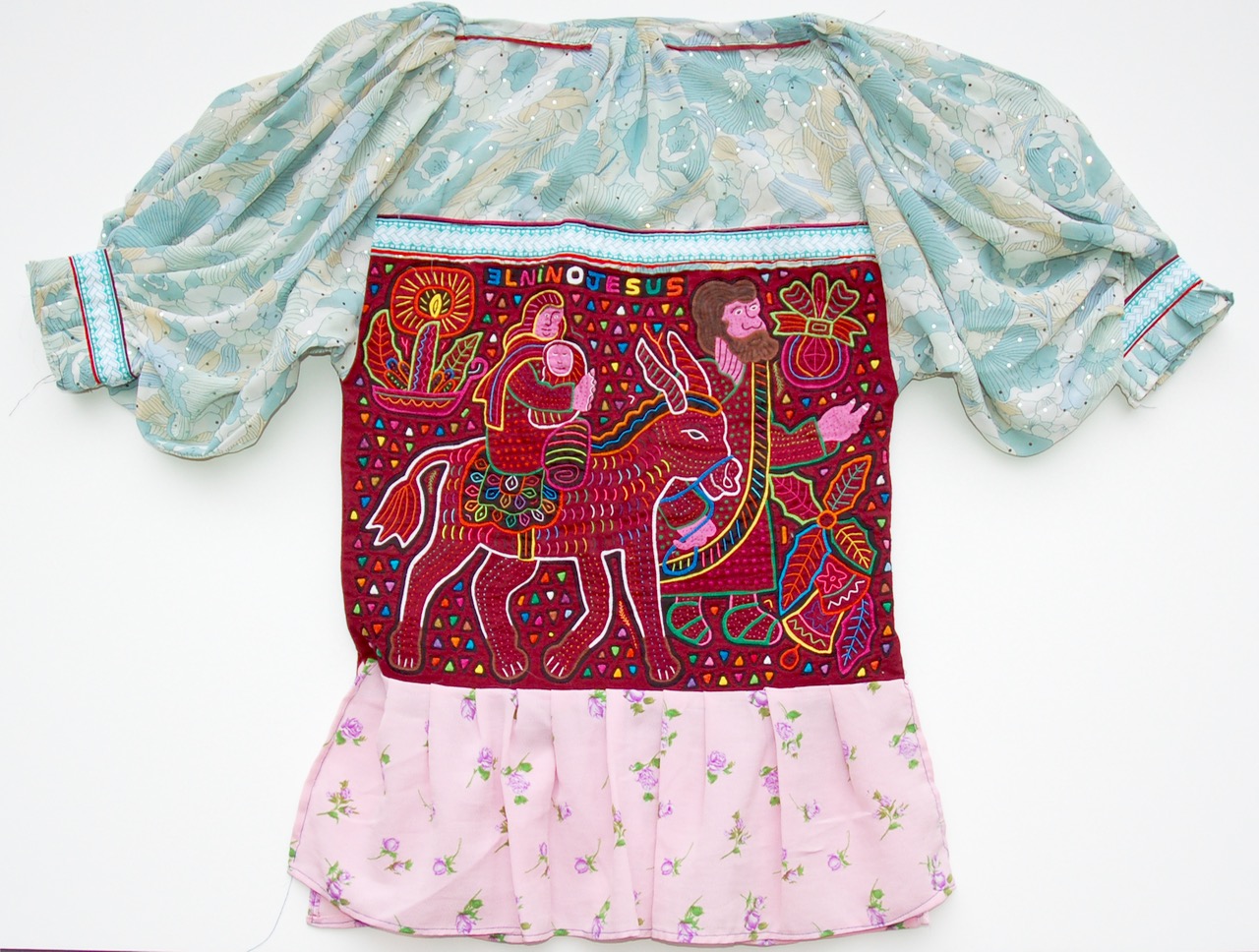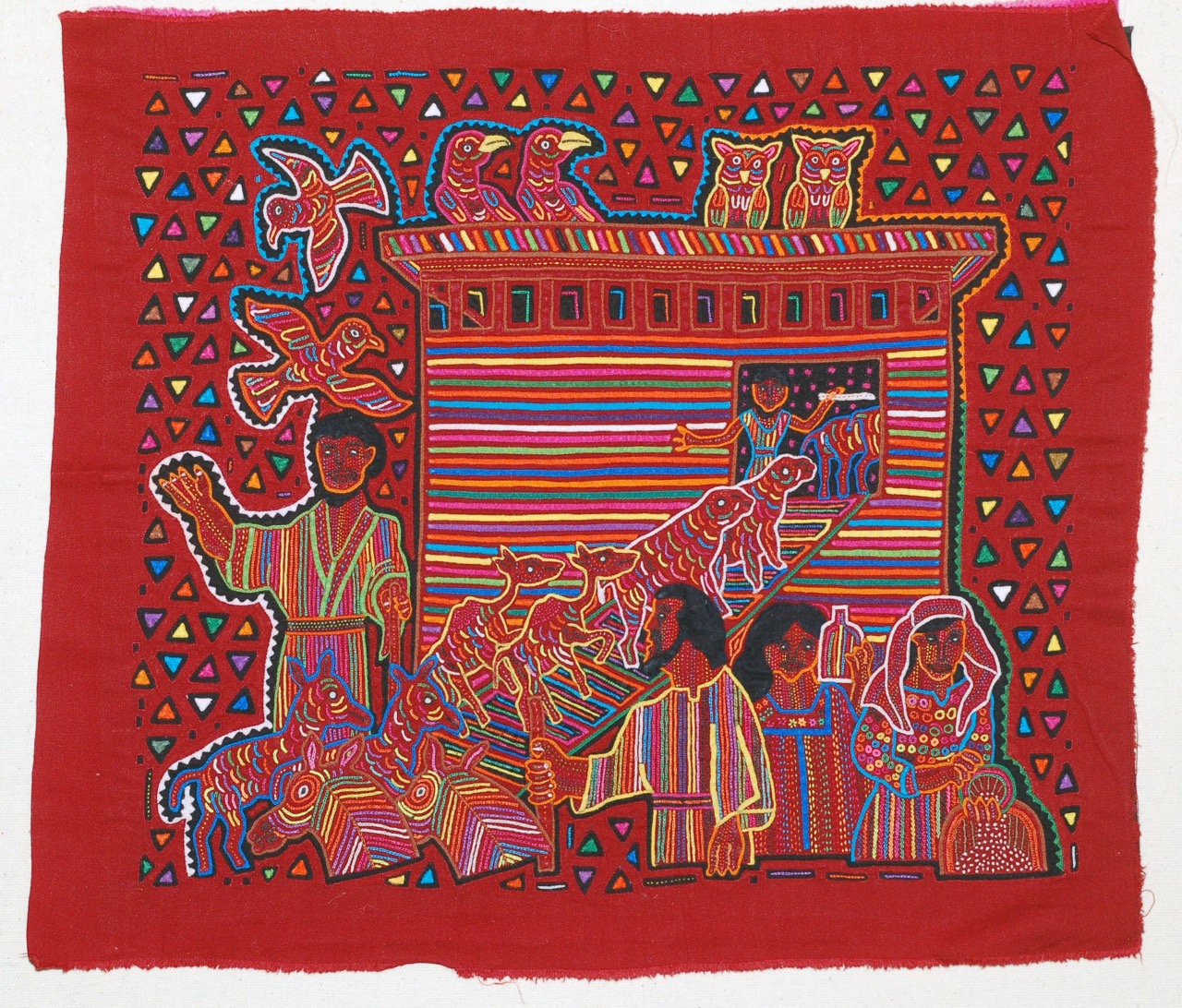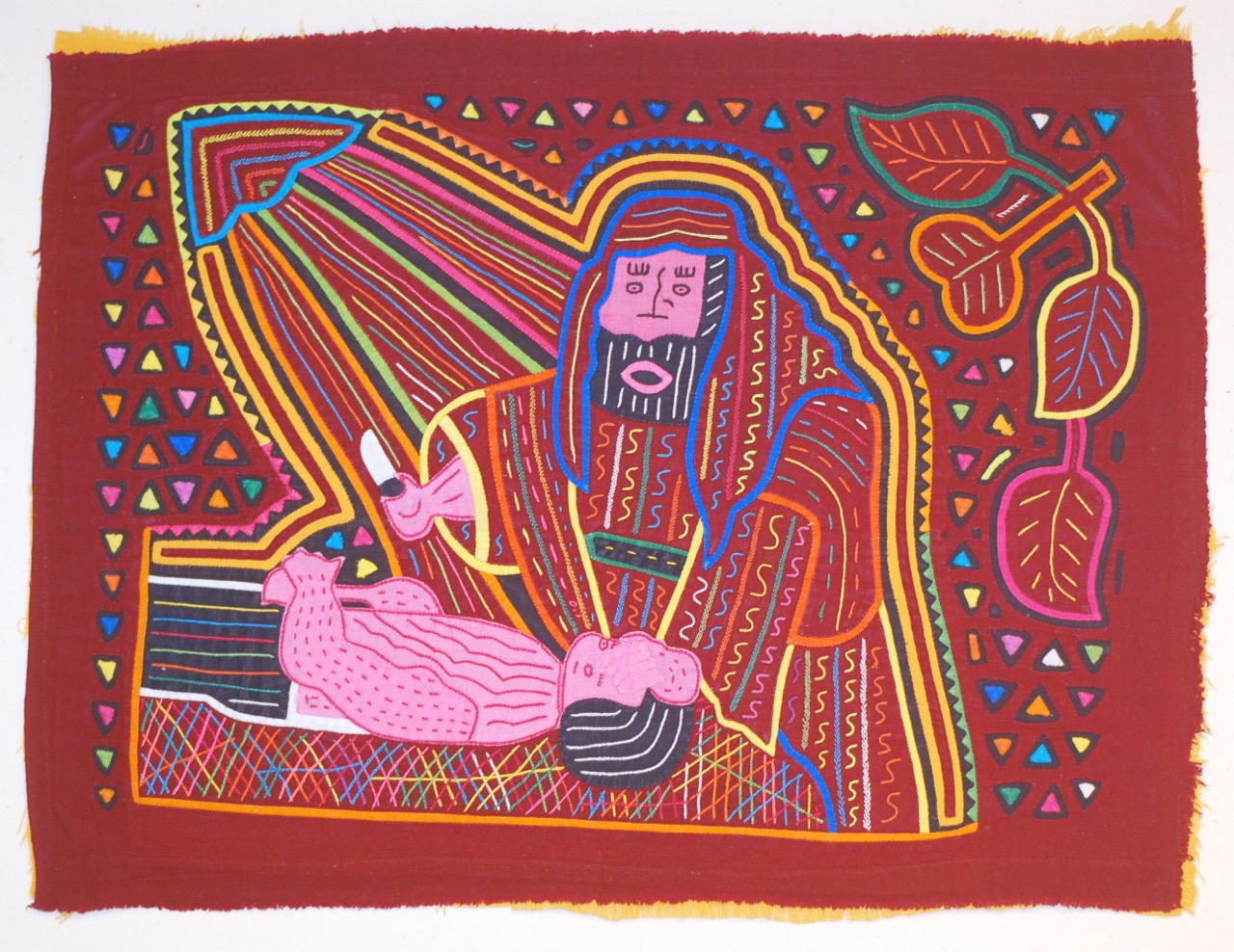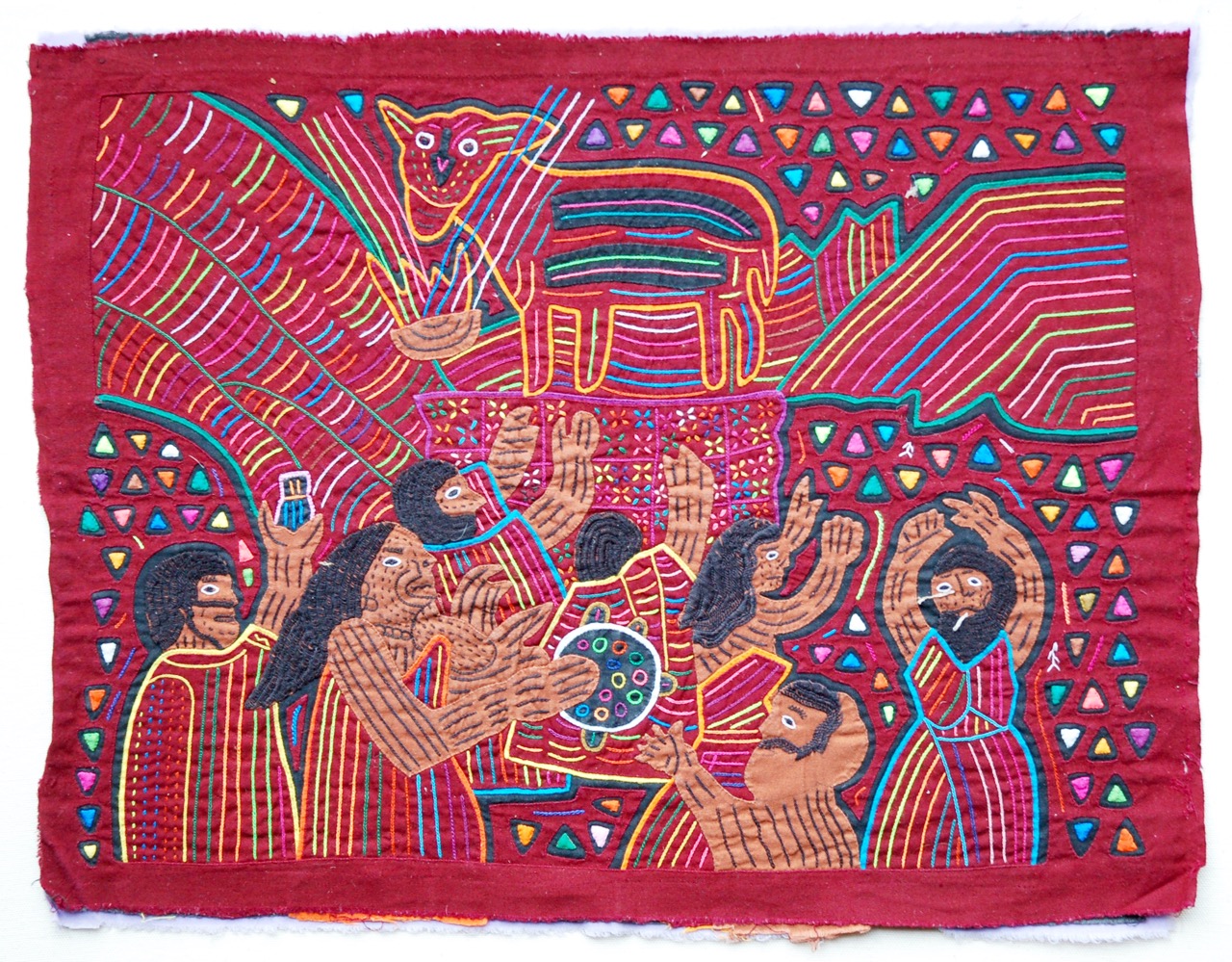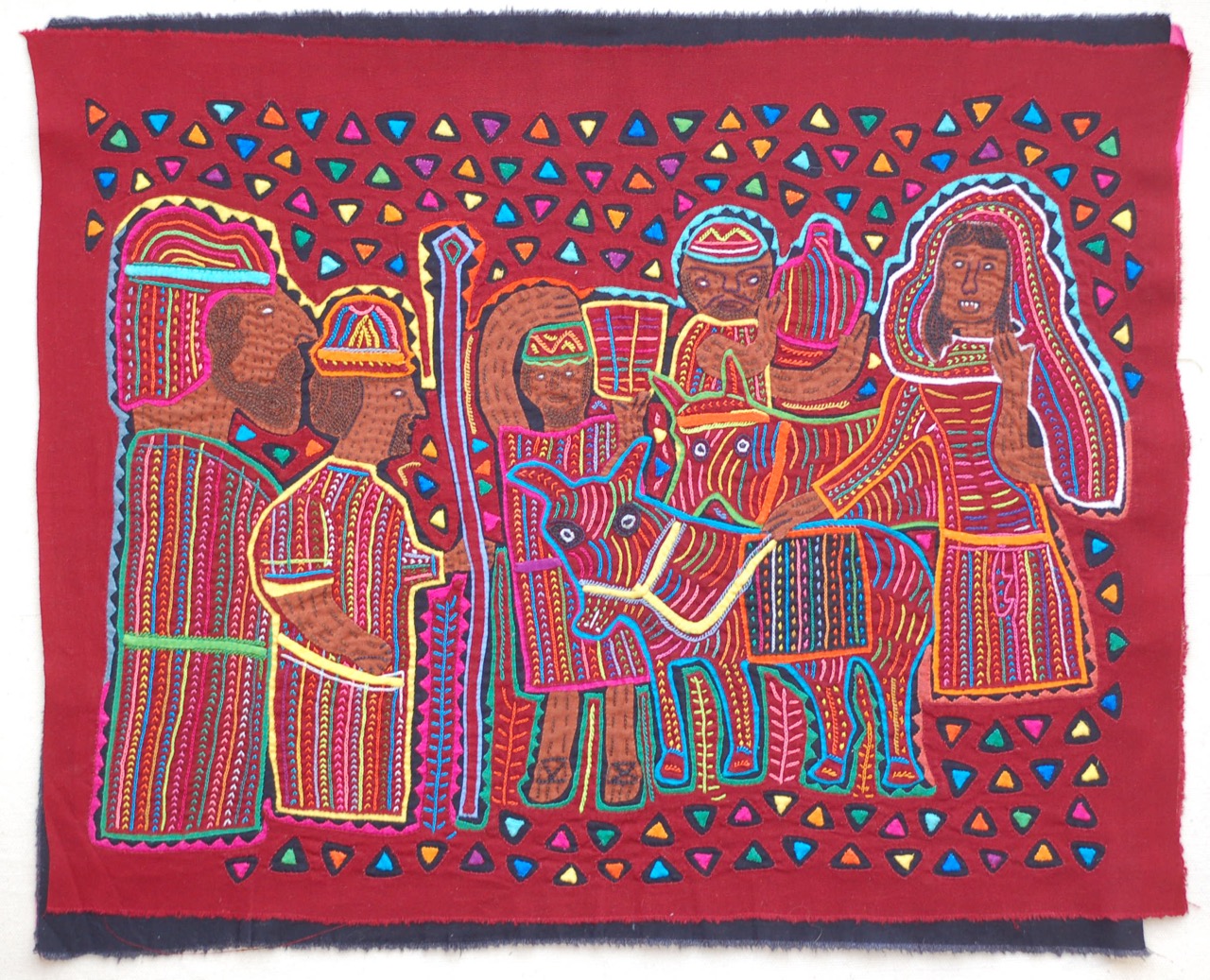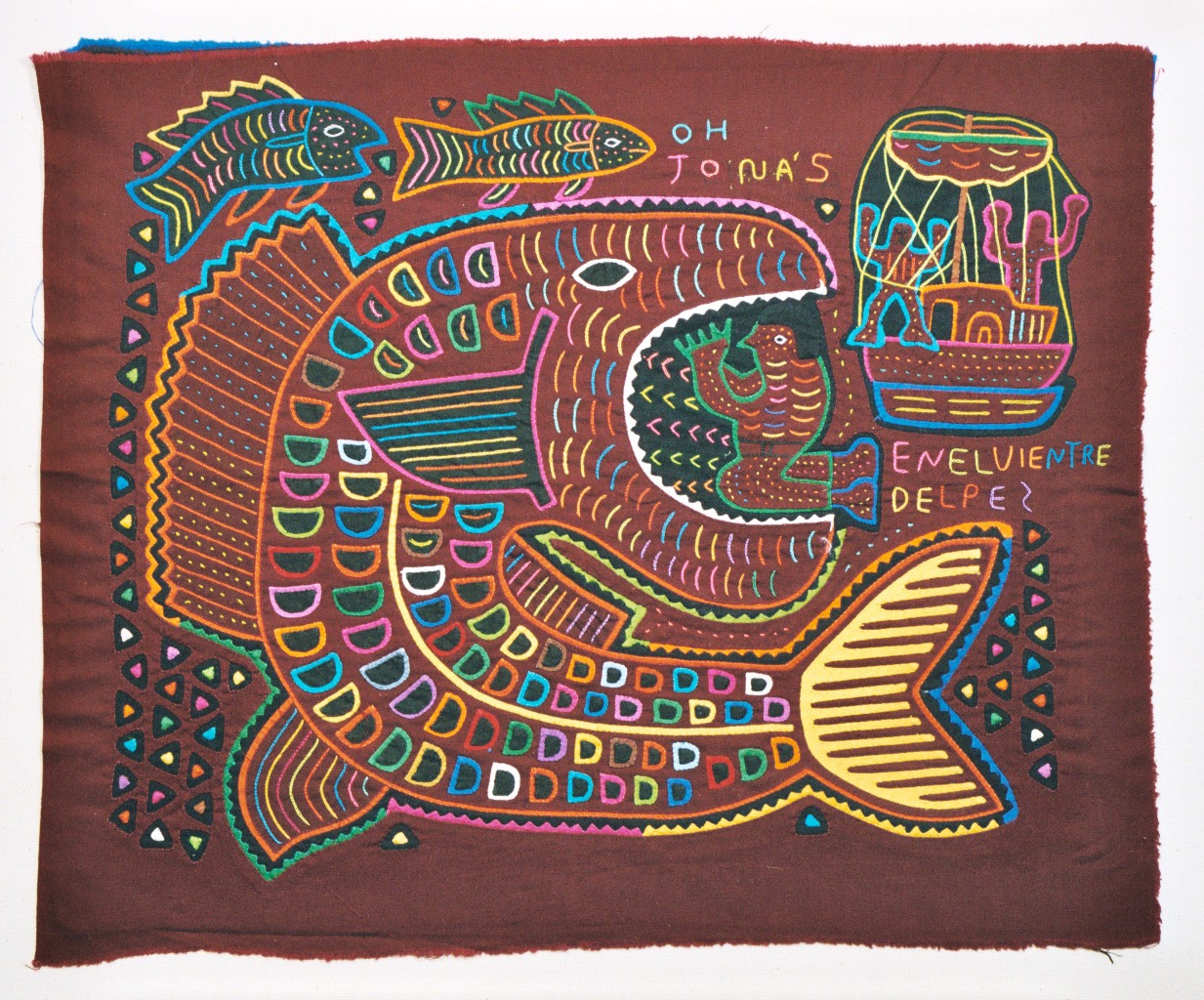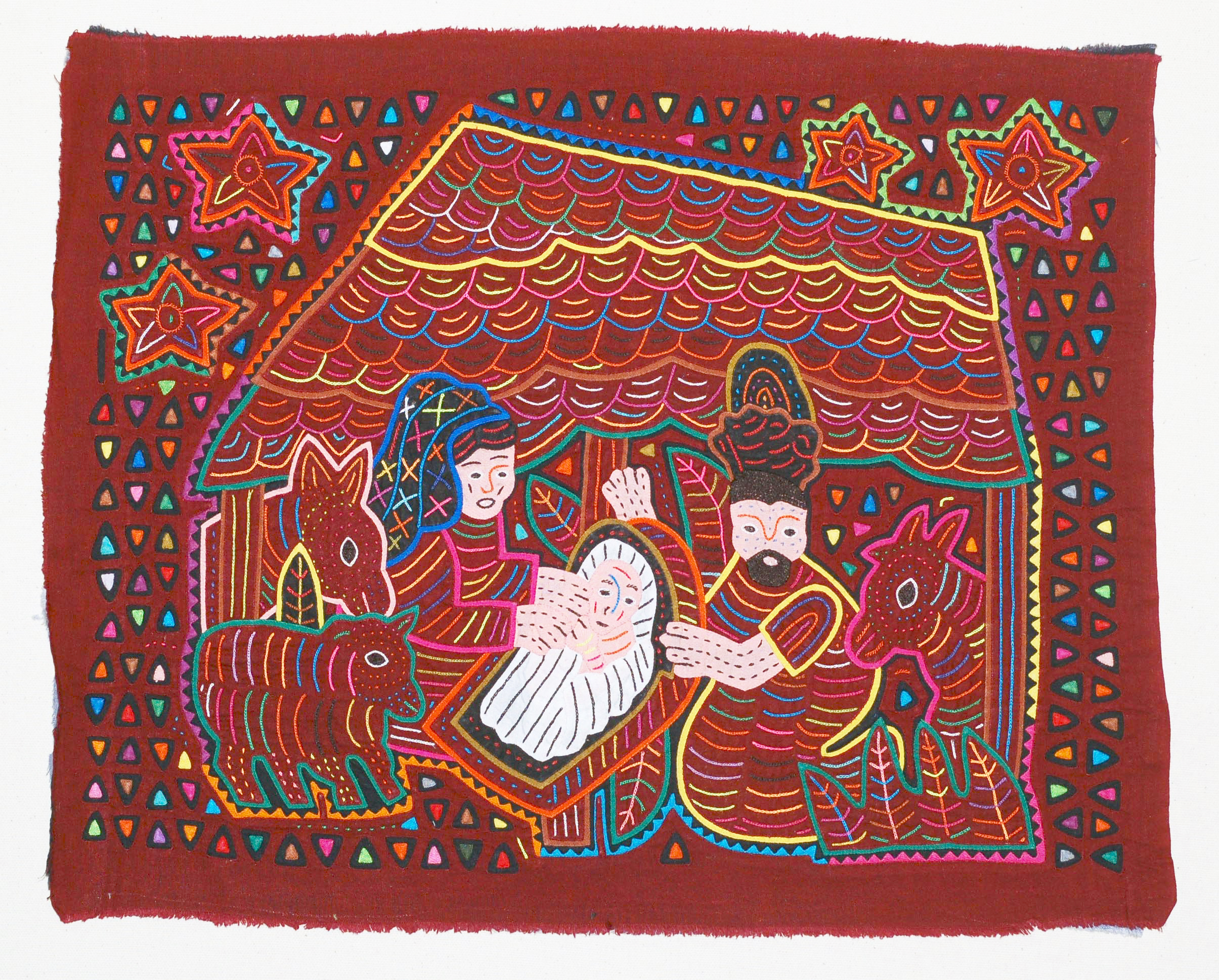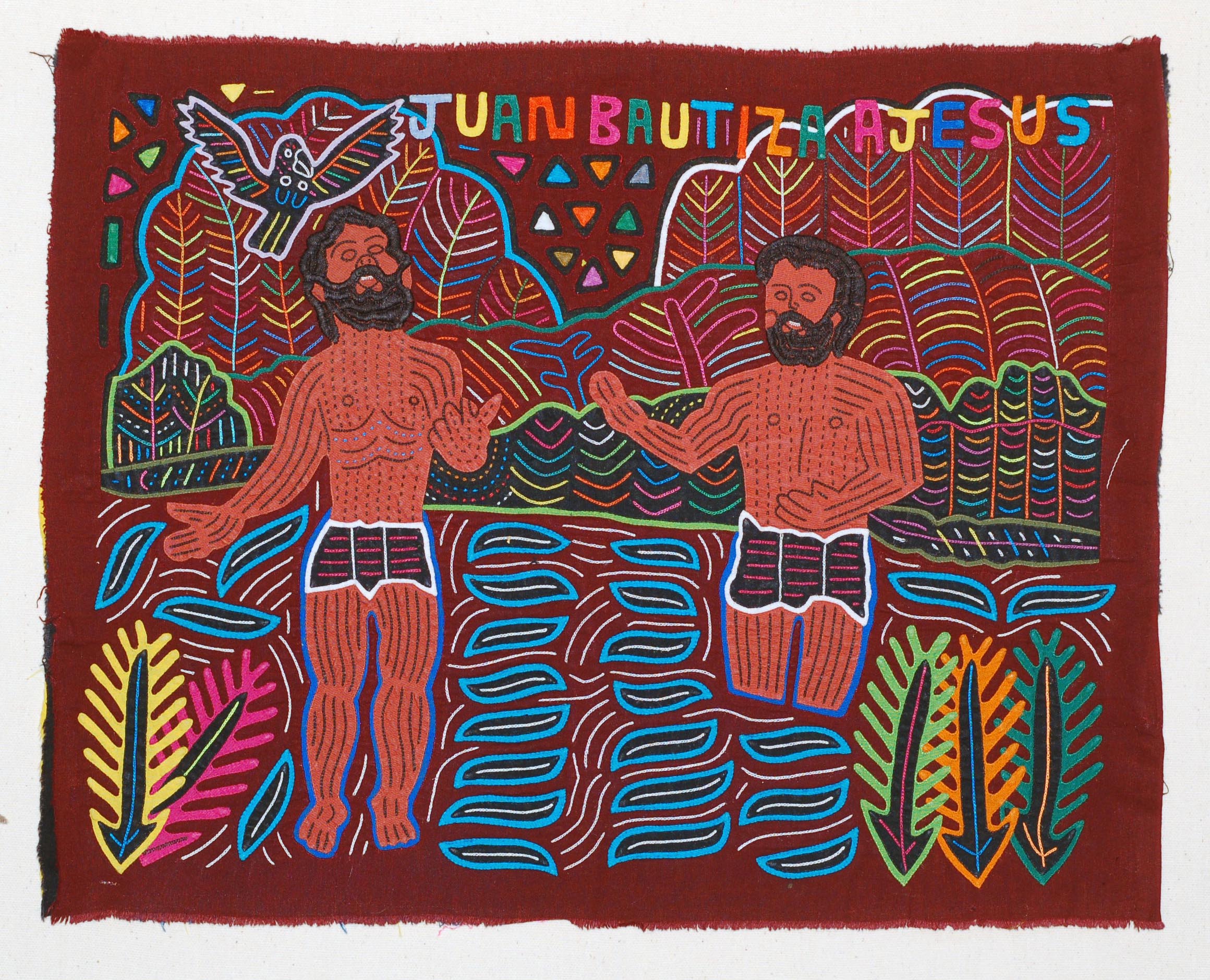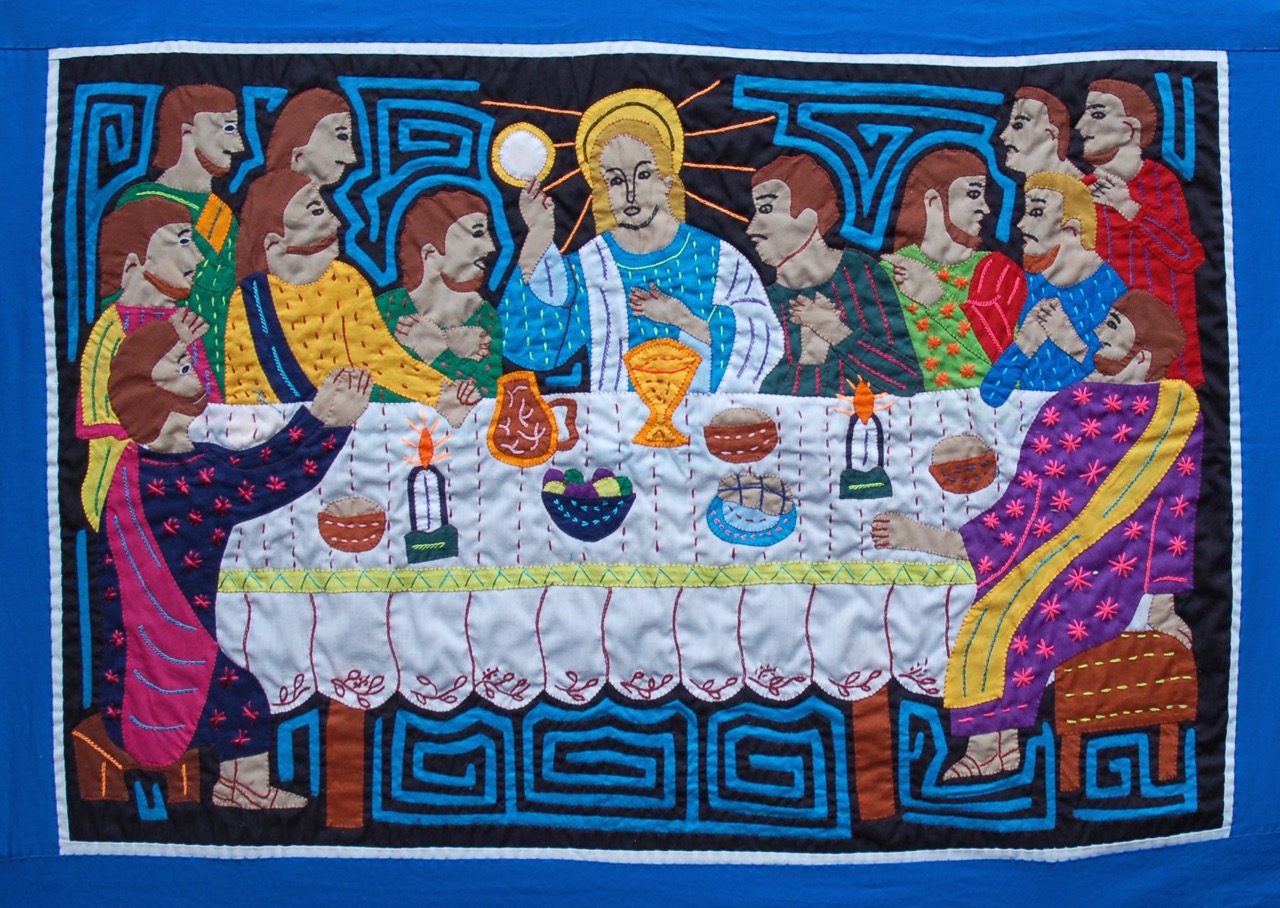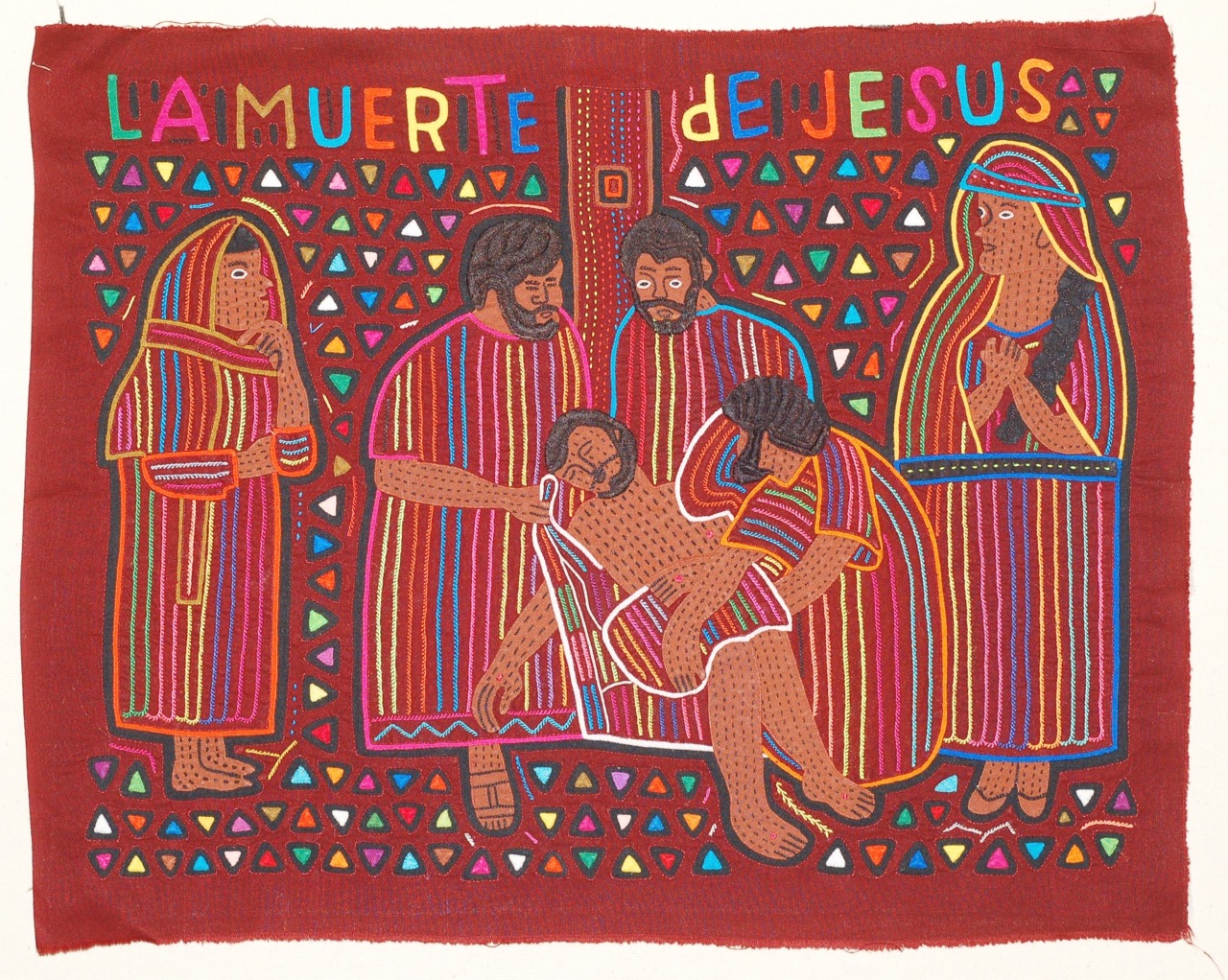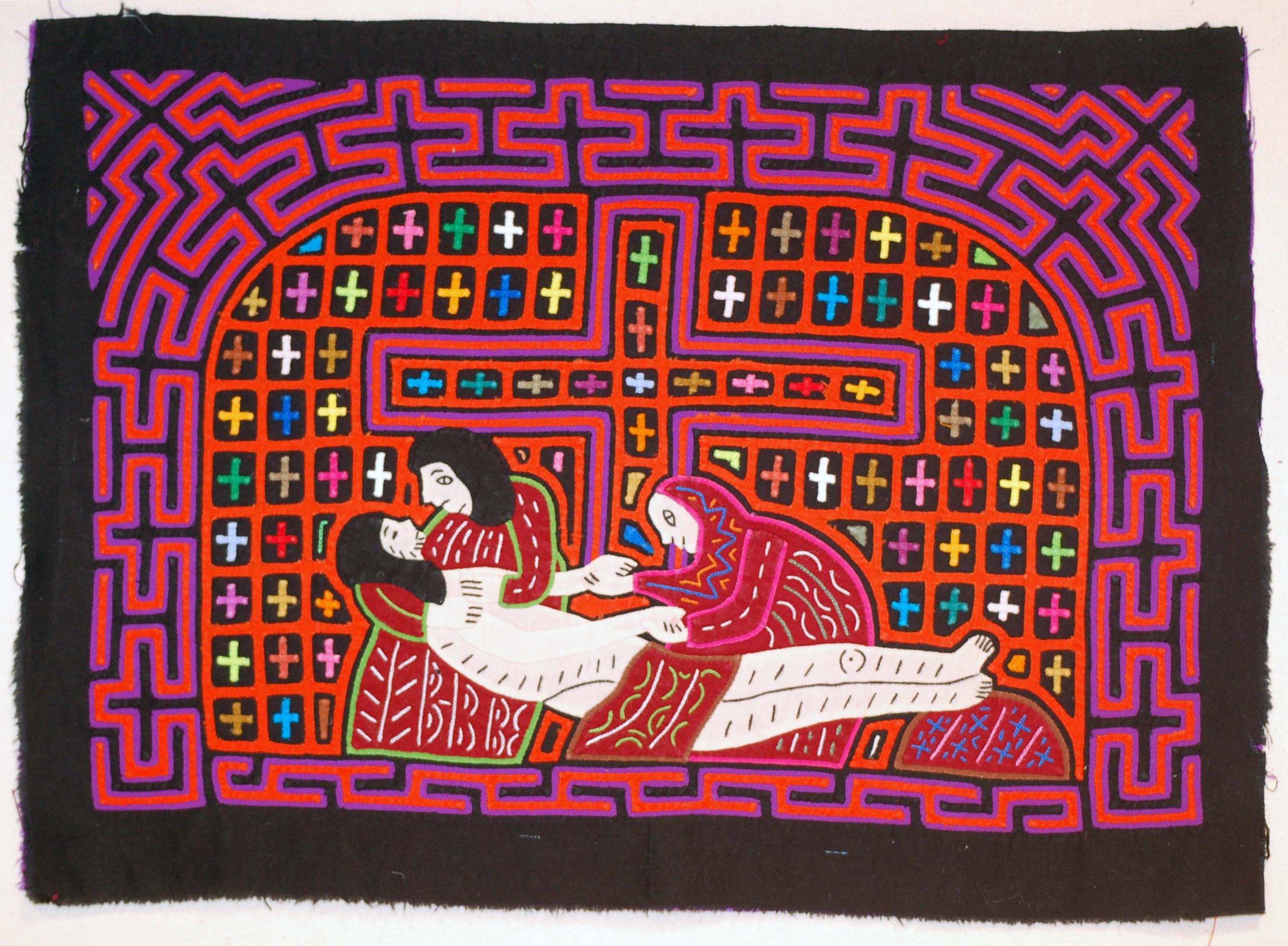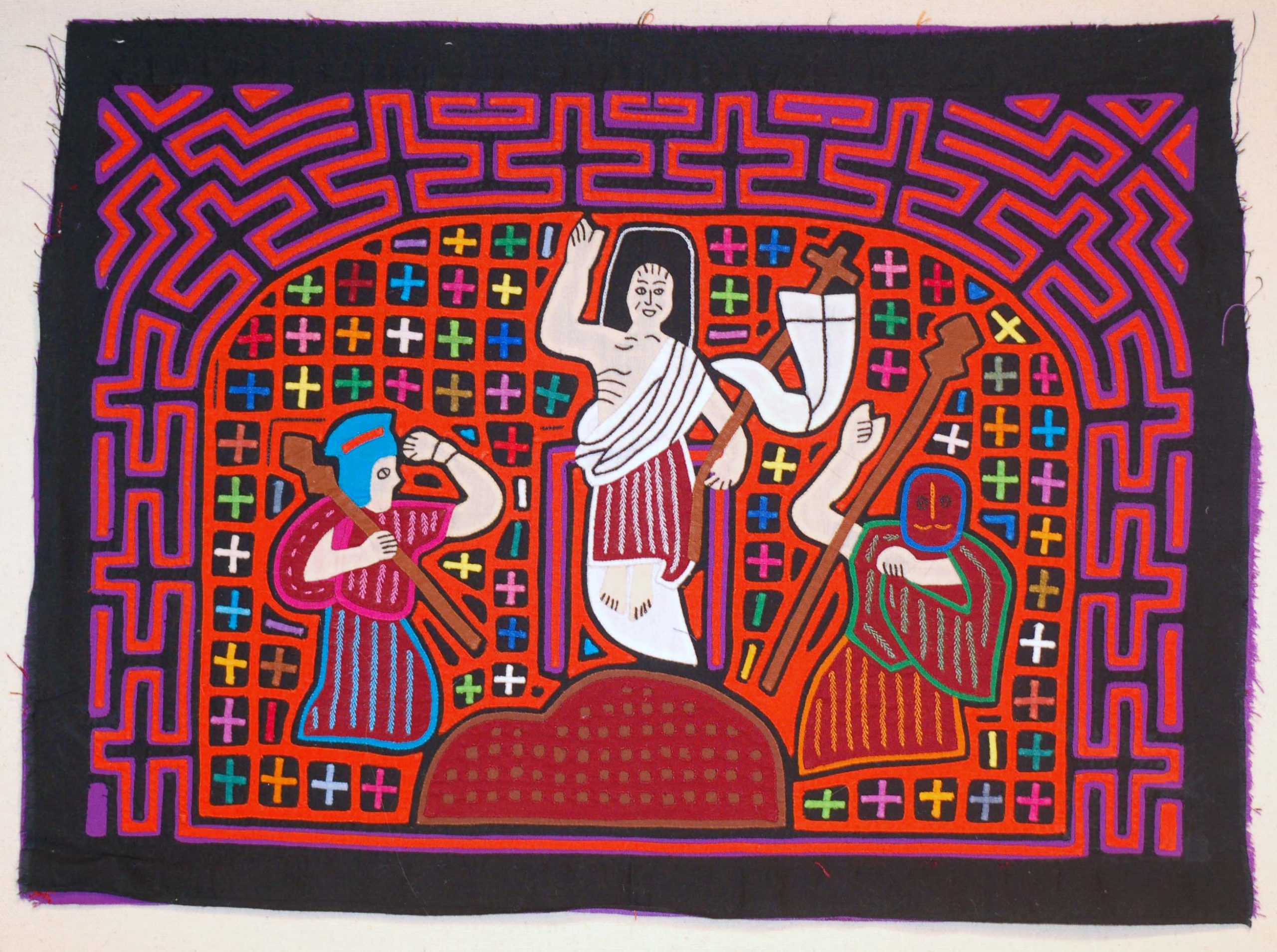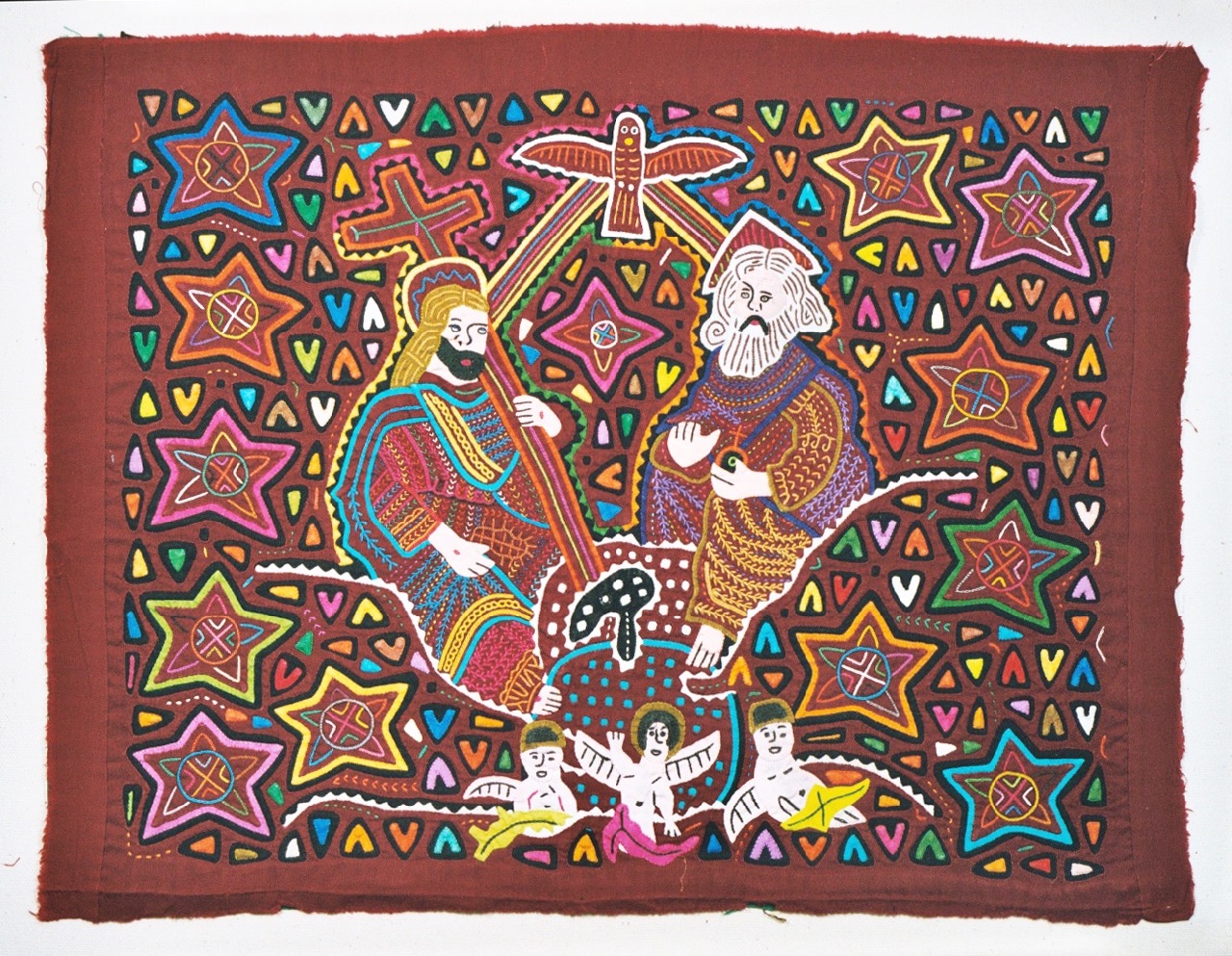From Eden to Eternity: Embroidered Interpretations of Biblical Stories
In the Caribbean, off the eastern shores of Panama, lies an archipelago of 365 coral islands known as San Blas Islands. They are politically autonomous and much of their traditional culture remains intact. Until the twentieth century, the peoples of these islands, the Cuna Indians, were virtually untouched by modern civilization. Like in many primitive cultures, history was passed along by word of mouth from generation to generation, while their religious beliefs, ancient rites, medicines, and social structure went unrecorded.
Over the last 100 years, a remarkable art form, the mola, emerged from these islands. Scholars of the Cuna culture suggest that the mola, a colorful fabric blouse with hand-stitched appliquéd panels worn as the front and back of dresses by Cuna women, grew out of traditional body painting. The tradition of body painting was intended to ward o ff evil spirits or to make the wearer invisible to the spirits. While little is known of the transitional steps from body painting to the mola, it is thought that the missionaries that arrived in the early 1900s encouraged the inhabitants of the Cuna Islands to use their keen sense of design to create colorful clothing. On many of the islands today there are still thriving Christian communities.
Th e molas’ brilliant colors and fanciful designs invite us to enjoy them as one of the world’s nest folk arts. Using only a needle, thread and scissors, molas are made by women and young girls who begin to sew at about seven years old. The molas are sewn in pairs, a front and back panel of a blouse, with each panel of the pair addressing the same or complementary theme. The designs originate from a great variety of sources, including birds and animals; flora and fauna; objects from the outside, mechanized world; fantasy; advertisements and trademarks; political campaigns and candidates; and from an early time, geometric or abstract designs. While most molas depict animals and scenes from the Cuna Indians’ surroundings, some molas can be found, like these on display, that re ect the Indians’ knowledge and expression of Christianity.
Th e mola panel consists of several layers of di fferent-colored cloth, usually red, orange and black, which are stitched together and on which designs are created by cutting out portions of the top layers to expose the colors of the lower layers. Th is is called reverse appliqué. In addition, the mola artists usually embellish the top layer with direct appliqué, often in several layers and in a variety of stitches to create an even richer surface. As in every art form, there is a great range of quality of workmanship and design, but somehow almost all molas emerge with an indescribable charm. A good quality mola panel may take a month or more to make and requires 40 or more hours of work.
Each mola in this exhibition is a beautifully designed interpretation of biblical stories with whimsical treatments and tender insights. Although the majority of the molas in this collection are displayed on stretched canvas, the end product in its traditional context is incorporated into women’s clothing. Th e collection re flects the Cunas’ passionate love of color and wonderful sense of design. On loan from the collection of Sandra and Bob Bowden, this exhibit also includes an example of a finished blouse.
Fourteen Molas:
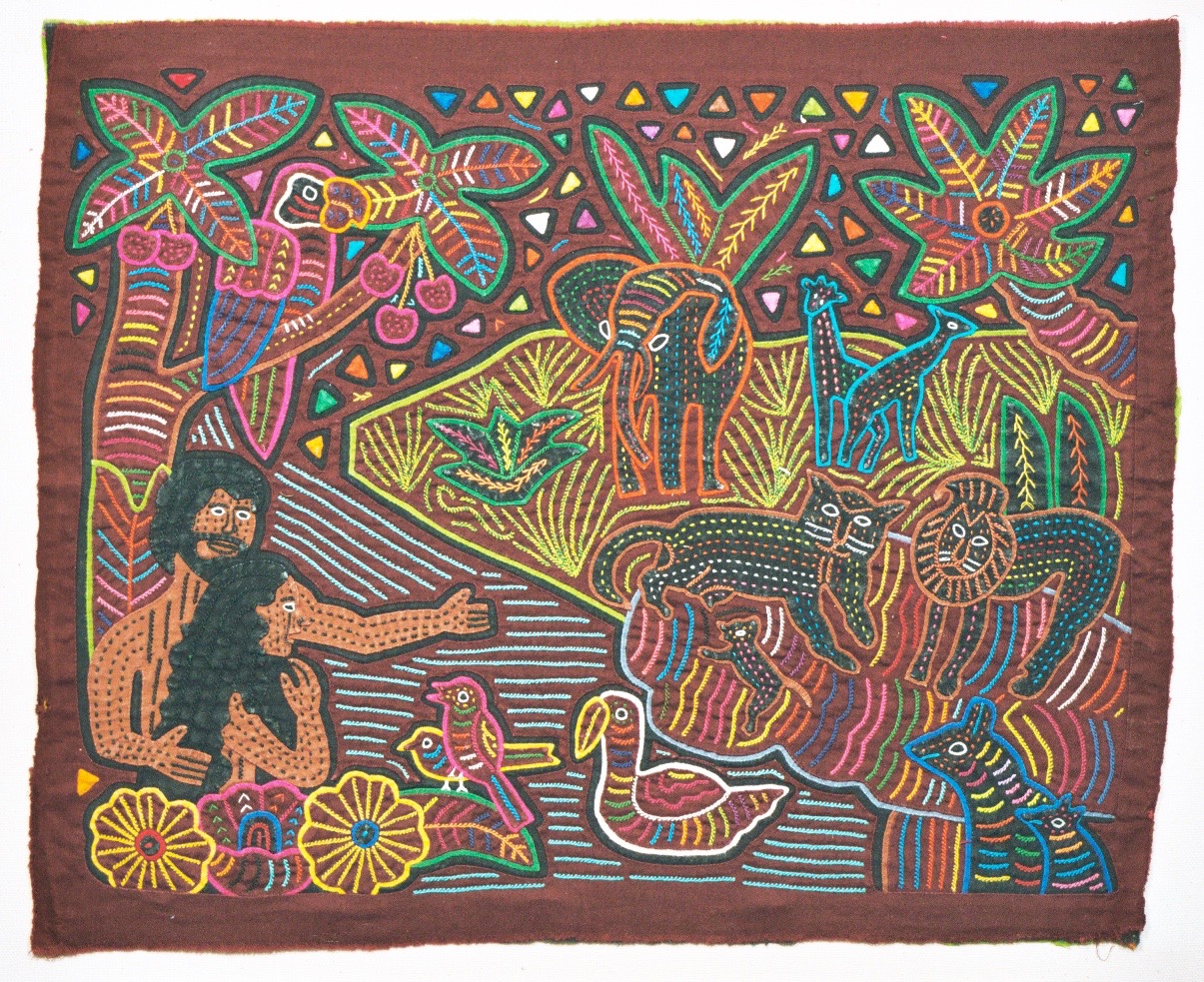
Naming of the Animals in the Garden of Eden

